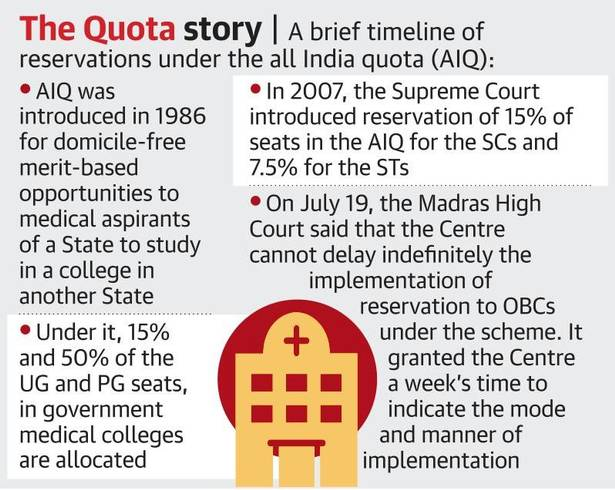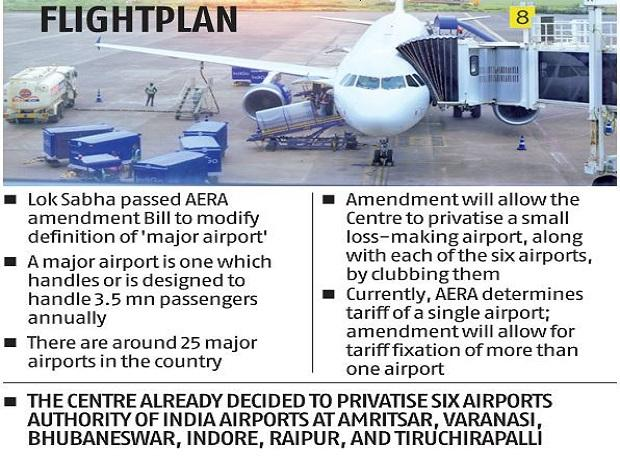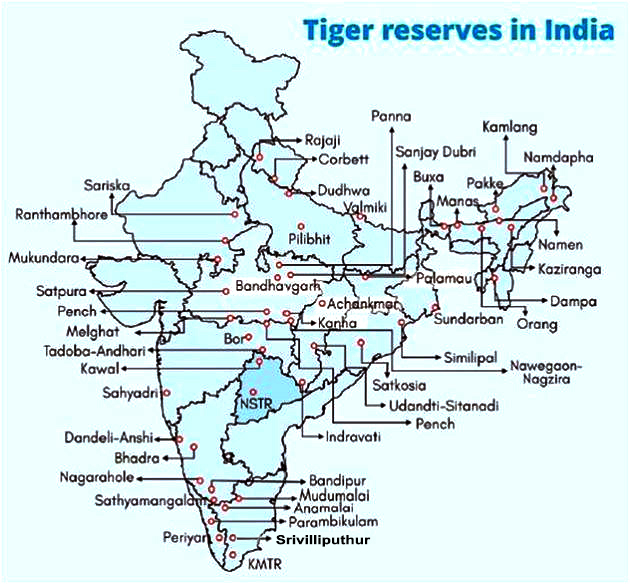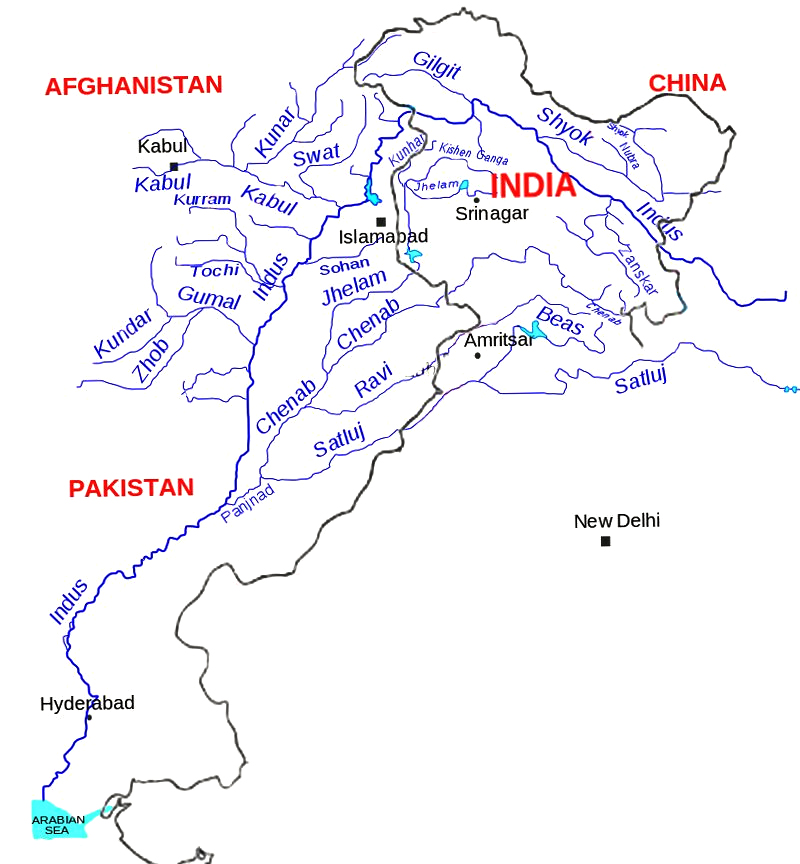Governance
New Initiatives for Education Sector
Why in News
Recently, the Prime Minister launched multiple initiatives in the education sector at a conference, to mark the completion of one year of reforms under the National Education Policy 2020 which aims at making India a global knowledge superpower.
- The Prime Minister also noted the role played by portals like Digital Infrastructure for Knowledge Sharing (DIKSHA) and Study Webs of Active Learning for Young Aspiring Minds (SWAYAM) in online education during the pandemic.
Key Points
- Academic Bank of Credit:
- It is envisaged as a digital bank that holds the credit earned by a student in any course. It is a major instrument for facilitating multidisciplinary and holistic education. It will provide multiple entry and exit options for students in Higher education.
- It will make the youth future-oriented and open the way for an Artificial Intelligence (AI) -driven economy.
- Engineering in Regional Languages:
- 14 engineering colleges in eight States are going to start engineering studies in five Indian languages: Hindi, Tamil, Telugu, Marathi and Bangla.
- This emphasis on mother tongue as the medium of instruction will instil confidence in the students from poor, rural and tribal backgrounds.
- In a recent survey, the All India Council of Technical Education (AICTE) discovered that 42% of the students surveyed nationally, favoured pursuing Engineering in regional languages.
- The AICTE is creating a database of resources to allow colleges to offer more programmes in regional languages and developed a tool to translate engineering content into 11 languages.
- 14 engineering colleges in eight States are going to start engineering studies in five Indian languages: Hindi, Tamil, Telugu, Marathi and Bangla.
- Vidya Pravesh & SAFAL:
- Vidya Pravesh, a three month play based school preparation module for Grade 1 students will be released along with SAFAL (Structured Assessment For Analyzing Learning Levels), a competency based assessment framework for Grades 3, 5 and 8 in CBSE schools.
- National Digital Education Architecture (NDEAR):
- It will help in building up a new education ecosystem that will create a digital foundation leading to self-governance of all parties involved, particularly states and the Centre.
- It lets educationists do evaluation based on talents and abilities, helping students understand their area of specialties that can be utilised in their future profession.
- National Education Technology Forum (NETF):
- It will provide independent evidence-based advice to central and state government agencies on technology-based interventions. A special focus will be on improving technology access at the grassroot education level.
- Schools will be required to have skilled professionals. In addition, schools will have to hire qualified candidates to teach emerging technological skills to students.
- Once the forum is set up, school-wise information will be sought on how technology is being used for imparting academic content and what steps are being taken to enhance research.
- It will be funded by the government but at a later stage, private funding and support from industry bodies would be invited.
- It will provide independent evidence-based advice to central and state government agencies on technology-based interventions. A special focus will be on improving technology access at the grassroot education level.
- NISHTHA 2.0:
- It will provide training to teachers as per their needs and they will be able to give their suggestions to the department. It will have 68 modules including 12 generic and 56 subject-specific modules and will cover around 10 lakh teachers.
- NISHTHA is the largest teachers’ training programme, first of its kind in the world to motivate and equip teachers to encourage and foster critical thinking in students.
- It will provide training to teachers as per their needs and they will be able to give their suggestions to the department. It will have 68 modules including 12 generic and 56 subject-specific modules and will cover around 10 lakh teachers.
- Sign Language as a Subject:
- Indian sign language, for the first time, has been accorded the status of language subject. Students will be able to study it as a language also.
- There are more than 3 lakh students who need sign language for their education. This will give a boost to Indian sign language and will help the divyang people.
Related Previous Initiatives
- National Programme on Technology Enhanced Learning.
- Rashtriya Ucchatar Shiksha Abhiyan (RUSA).
- Prime Minister's Research Fellowship (PMRF).
- Scheme for Promotion of Academic and Research Collaboration (SPARC).
- Sarva Shiksha Abhiyan.
- NEAT.
- PRAGYATA.
- Mid Day Meal Scheme.
- Right To Education (RTE) Act, 2009.
- Beti Bachao Beti Padhao.
Governance
Social Audit of Social Sector Schemes
Why in News
The Ministry of Social Justice and Empowerment has formulated a scheme, namely Information-Monitoring, Evaluation and Social Audit (I-MESA) in FY 2021-22.
Key Points
- About the I-MESA Scheme:
- Under this scheme, Social Audits are to be conducted for all the schemes of the Department starting FY 2021-22.
- These social audits are done through Social Audit Units (SAU) of the States and National Institute for Rural Development and Panchayati Raj.
- Important Schemes of the Ministry of Social Justice and Empowerment:
- Schemes for Economic Development:
- Credit Enhancement Guarantee Scheme for the Scheduled Castes (SCs)
- National Safai Karamcharis Finance and Development Corporation (NSKFDC)
- National Scheduled Castes Finance and Development Corporation (NSFDC)
- Special Central Assistance to Scheduled Caste Sub Plan (SCA to SCSP)
- Scheme of Assistance to Scheduled Castes Development Corporations (SCDCs)
- Self Employment:
- Schemes for Social Empowerment:
- Centrally Sponsored Scheme for implementation of the Protection of Civil Rights Act, 1955 and the Scheduled Castes and the Scheduled Tribes (Prevention of Atrocities) Act, 1989
- Pradhan Mantri Adarsh Gram Yojana (PMAGY)
- Schemes for Economic Development:
Social Audit
- About:
- Meaning: Social Audit is the audit of a scheme jointly by the Government and the people, especially by those who are affected by the scheme or its beneficiaries.
- Benefits: It is a powerful tool to promote transparency, accountability and people’s participation in the schemes meant for them.
- A social audit helps to narrow gaps between vision/goal and reality, between efficiency and effectiveness.
- Status:
- Mahatma Gandhi National National Rural Employment Guarantee Act (MGNREGA) was the first Act to mandate Social Audit by the Gram Sabha of all the projects taken up in the Gram Panchayat.
- Most States have set up an independent Social Audit Unit (SAU) and some have even begun to facilitate Social Audit in other programmes, including Pradhan Mantri Awas Yojana, National Social Assistance Programme, Midday Meal Scheme and Public Distribution System.
- Challenges:
- The lack of adequate administrative and political will in institutionalising social audits to deter corruption has meant that social audits in many parts of the country are not independent of the influence of implementing agencies.
- Social audit units, including village social audit facilitators, continue to face resistance and intimidation and find it difficult to even access primary records for verification.
- People’s participation has been minuscule due to the lack of education, awareness and capacity building among the common masses.
- There is an absence of an independent agency to investigate and act on social audit findings.
- Suggestions:
- Citizens groups need to campaign for strengthening social audits and make real progress in holding the political executive and implementing agencies accountable.
- Team of social audit experts should be established in each district who are responsible for training social audit committee members (stakeholders).
- Training programmes should be created on social auditing methods such as conducting and preparing social audit reports, and presentation at Gram Sabha.
- The system of social audits needs a synergetic endorsement and a push by multiple authorities to establish an institutionalised framework which cannot be undermined by any vested interests.
Indian Polity
NEET’s All India Quota
Why in News
Recently, the Union Health Ministry has announced 27% reservation for the Other Backward Classes (OBCs) and 10% quota for the Economically Weaker Sections (EWS) in the All India Quota (AIQ) scheme for undergraduate (UG) and postgraduate (PG) medical/dental courses from 2021-22 onwards.
Key Points
- About All India Quota (AIQ) Scheme:
- The AIQ was introduced in 1986 under the directions of the Supreme Court (SC) to provide for domicile-free merit-based opportunities to students from any State to aspire to study in a medical college located in another State.
- It comprises 15% of UG seats and 50% of PG seats in government medical colleges.
- Remaining chunk of the seats in state medical/dental colleges is reserved for students domiciled in their respective states.
- In January, 2007, in Abhay Nath v University of Delhi and Others, the SC directed that reservation of 15% for Scheduled Castes and 7.5% for Scheduled Tribes be introduced in the AIQ.
- Until 2007, no reservation was implemented within the All India Quota for medical admission.
- When the Central Educational Institutions (Reservation in Admission) Act became effective in 2007, providing for uniform 27% reservation to the OBCs, the scheme was implemented in all the Central Educational Institutions.
- However, this was not extended to the AIQ seats of State medical and dental colleges.
- The 10% EWS quota under the Constitution (One Hundred And Third Amendment) Act, 2019, too, has been implemented in central educational Institutions, but not in the National Eligibility-cum-Entrance Test (NEET) AIQ for state institutions.
- Now, after this decision, the Reservation for the OBC and EWS categories within the AIQ will be offered in medical colleges from the current academic year.
- This decision will help thousands of students under the given categories.
- The AIQ was introduced in 1986 under the directions of the Supreme Court (SC) to provide for domicile-free merit-based opportunities to students from any State to aspire to study in a medical college located in another State.
- About NEET:
- The National Eligibility-cum-Entrance Test (NEET) is the entrance examination for entry to all undergraduate and postgraduate medical and dental courses in the country.
- Until 2016, the All India Pre-Medical Test (AIPMT) was the national-level entrance examination for medical colleges.
- While state governments used to hold separate entrance tests for seats that were not contested at an all-India level.
- In 2016, the Supreme Court upheld the newly inserted section 10-D of the Indian Medical Council Act, 1956 which provides for a uniform entrance examination to all medical educational institutions at undergraduate level and postgraduate level in Hindi, English and various other languages.
- Now, the Indian Medical Council Act, 1956 stands repealed after it has been replaced by the National Medical Commission Act, 2019 that came into existence on 8th August 2019.
- It is conducted by the National Testing Agency (NTA).
Indian Economy
AERA Amendment Bill, 2021
Why in News
Recently, the Lok Sabha passed the Airports Economic Regulatory Authority of India (AERA) Amendment Bill, 2021.
- It was first introduced in March 2021 and subsequently referred to a parliamentary standing committee on transport, tourism and culture, which approved it without any changes.
- It seeks to amend the Airports Economic Regulatory Authority of India Act, 2008.
Key Points
- Major Provisions:
- Definition:
- It proposes to amend the definition of major airport to include a group of airports.
- The 2008 Act designates an airport as a major airport if it has an annual passenger traffic of at least 35 lakh.
- The central government may also designate any airport as a major airport by a notification.
- It proposes to amend the definition of major airport to include a group of airports.
- Tariff:
- It will allow AERA to regulate tariff and other charges for aeronautical services for not just major airports with annual passenger traffic of more than 35 lakh, but also a group of airports.
- Profitable Clubbing:
- The government will be able to club profitable and non-profitable airports as a combination/package to bidders to make it a viable combination for investment under PPP (Public-Private Partnership) mode.
- Definition:
- Significance:
- It will help in expanding the air connectivity to relatively remote areas and as a result, expediting the UDAN regional connectivity scheme.
- It will encourage development of smaller airports.
- Concern:
- Lack of clarity in the bill on the criterion for deciding which airports will be clubbed together to qualify under ‘a group of airports’ definition, whether it will be the passenger traffic of more than 3.5 million or some other factors too.
Airports Economic Regulatory Authority of India
- Background:
- Initially, the Airports Authority of India (AAI) was running and managing the airports. After some time, a change was made in the civil aviation policy as some private players were also given airports to run. The reason behind this was to provide consumers with great services.
- Typically, airports run the risk of becoming a monopoly because cities usually have one civilian airport which controls all aeronautical services in that area.
- To ensure that private airport operators do not misuse their monopoly, the need for an independent tariff regulator in the airport sector was felt.
- About:
- The Airports Economic Regulatory Authority of India Act, 2008 (AERA Act) was passed which set up the AERA as a statutory body.
- It was set up, keeping in mind that the country needs to have an independent regulator who has transparent rules and can take care of the interests of the service providers as well as that of the consumers.
- Functions:
- The AERA regulates tariffs and other charges (development fee and passenger service fee) for aeronautical services (air traffic management, landing and parking of aircraft, ground handling services) at major airports.
Indian Economy
Factoring Regulation (Amendment) Bill, 2021
Why in News
Recently, Rajya Sabha has passed the Factoring Regulation (Amendment) Bill, 2021 to bring changes in the legislation aimed at helping the Micro, Small and Medium Enterprises (MSME) sector.
- It has incorporated many suggestions from the UK Sinha Committee.
Factoring business
- Factoring business is a business where an entity acquires the receivables of another entity for an amount.
- Note that credit facilities provided by a bank against the security of receivables are not considered as factoring business.
- Factor can be a bank, a registered non-banking financial company or any company registered under the Companies Act.
- Receivables is the total amount that is owed or yet to be paid by the customers (referred as the debtors) to the assignor for the use of any goods, services or facility.
Key Points
- Key Provisions of the Bill:
- Change in the Definitions:
- It amends the definitions of "receivables", "assignment", and "factoring business" to bring them at par with international definitions.
- Relaxation to NBFCs’ Factoring Threshold:
- The bill seeks to amend the Factoring Regulation Act, 2011 to widen the scope of entities which can engage in factoring business.
- The current law which gave the Reserve Bank of India authority to allow non-bank finance companies to remain in factoring business only if it was their principal business.
- That is, more than half of assets were to be deployed and income earned from factoring business.
- The Bill removes this threshold and opens up the opportunity in this business to more non-bank lenders at a time small businesses are facing financial stress.
- TReDS to Register Charges:
- The Bill states that where trade receivables are financed through Trade Receivables Discounting System (TReDS), the details regarding transactions should be filed with the Central Registry by the concerned TReDS, on behalf of the factor.
- TReDS is an electronic platform for facilitating financing of trade receivables of MSMEs.
- The Bill states that where trade receivables are financed through Trade Receivables Discounting System (TReDS), the details regarding transactions should be filed with the Central Registry by the concerned TReDS, on behalf of the factor.
- RBI to Regulate:
- It empowers Reserve Bank of India (RBI) to make regulations for granting registration certificates to a factor, filing of transaction details with the Central Registry and all other matters.
- No time-bound Registration:
- It removes the 30-day time period for the factors to register the details of every transaction entered by them. The registering authority for such transactions is the Central Registry setup under the Securitisation and Reconstruction of Financial Assets and Enforcement of Security Interest (SARFAESI) Act, 2002.
- Change in the Definitions:
- Significance:
- Allowing non-NBFC factors and other entities to undertake factoring is expected to increase the supply of funds available to small businesses.
- This may result in bringing down the cost of funds and enable greater access to the credit-starved small businesses, ensuring timely payments against their receivables.
- MSMEs will get the easier liquidity which will help in their operation.
- MSMEs are facing difficulty due to delay in receivables and this bill will help in ensuring smoother working capital cycle and healthier cash flow.
- It will liberalise the restrictive provisions in the Act and at the same time ensure that a strong regulatory/oversight mechanism is put in place through the RBI.
- UK Sinha Committee:
- The Reserve Bank had set up an eight-member expert committee under the leadership of the former chairman of Securities and Exchange Board of India (SEBI), UK Sinha to review the framework for the MSME sector, in 2019.
- It has made recommendations with regard to amendments in MSME Development Act, strengthening of financial delivery mechanism, improving marketing support, encouraging technology adoption and strengthening of cluster development support for MSMEs etc.
Biodiversity & Environment
International Tiger Day
Why in News
Recently, at the virtual meeting celebrating International Tiger Day (29th July), Prime Minister of India reiterated India’s commitment to ensuring safe habitats for its tigers and nurturing tiger-friendly eco systems.
- Also, at this meeting, 14 Tiger Reserves in India received the accreditation of the Global Conservation Assured|Tiger Standards (CAITS).
Key Points
- Conservation Status of Tiger:
- Indian Wildlife (Protection) Act, 1972: Schedule I
- International Union for Conservation of Nature (IUCN) Red List: Endangered.
- Convention on International Trade in Endangered Species of Wild Fauna and Flora (CITES): Appendix I.
- Significance of Tiger Conservation:
- Tiger conservation is a symbol of conservation of forests.
- The tiger is a unique animal which plays a pivotal role in the health and diversity of an ecosystem.
- It is a top predator which is at the apex of the food chain and keeps the population of wild ungulates (primarily large mammals) in check.
- Thus, Tiger helps in maintaining the balance between prey herbivores and the vegetation upon which they feed.
- Therefore, Tiger Conservation is not just about saving a beautiful animal.
- It is about making sure that we live a little longer as the forests are known to provide ecological services like clean air, water, pollination, temperature regulation etc.
- Further, the significance of Tiger conservation can be reflected by the Status of Leopards, Co-predators and Megaherbivores-2018’ report.
- According to the report, the overall leopard population in the tiger range landscape of India in 2018 was estimated at 12,852.
- This is a significant increase from the 2014 figure that was 7,910 in forested habitats of 18 tiger bearing states of the country.
- The report is a testimony to the fact that conservation of tigers leads to the conservation of the entire ecosystem.
- Tiger Conservation Projects in India:
- Project Tiger 1973: Project Tiger is a Centrally Sponsored Scheme of the Ministry of Environment, Forests and Climate Change (MoEFCC) launched in 1973. It provides havens for tigers in the country’s national parks.
- National Tiger Conservation Authority (NTCA): It is a statutory body under the MoEFCC and was established in 2005 following the recommendations of the Tiger Task Force.
- India’s Tiger Conservation Status:
- India is home to over 70% of the tiger population globally.
- India is home to 51 tiger reserves spread across 18 states and the last tiger census of 2018 showed a rise in the tiger population.
- India achieved the target of doubling the tiger population four years ahead of schedule (2022) of the St. Petersburg Declaration on tiger conservation.
- India’s strategy of tiger conservation attaches topmost importance to involving local communities.
- Conservation Assured | Tiger Standards (CA|TS):
- CA|TS has been agreed upon as an accreditation tool by the global coalition of Tiger Range Countries (TRCs) and has been developed by tiger and protected area experts.
- There are currently 13 tiger range countries - India, Bangladesh, Bhutan, Cambodia, China, Indonesia, Lao PDR, Malaysia, Myanmar, Nepal, Russia, Thailand and Vietnam.
- CA|TS is a set of criteria which allows tiger sites to check if their management will lead to successful tiger conservation.
- It was officially launched in 2013.
- The Global Tiger Forum (GTF), an international NGO working on tiger conservation, and World Wildlife Fund India are the two implementing partners of the National Tiger Conservation Authority for CATS assessment in India.
- 14 Tiger Reserves which have been accredited are:
- Manas, Kaziranga and Orang Tiger Reserve in Assam,
- Satpura, Kanha and Panna Tiger Reserve in Madhya Pradesh,
- Pench Tiger Reserve in Maharashtra,
- Valmiki Tiger Reserve in Bihar,
- Dudhwa Tiger Reserve in Uttar Pradesh,
- Sunderbans Tiger Reserve in West Bengal,
- Parambikulam Tiger Reserve in Kerala,
- Bandipur Tiger Reserve of Karnataka
- Mudumalai and Anamalai Tiger Reserve in Tamil Nadu.
- CA|TS has been agreed upon as an accreditation tool by the global coalition of Tiger Range Countries (TRCs) and has been developed by tiger and protected area experts.
Biodiversity & Environment
Sutlej River Pollution
Why in News
The pollution in river Sutlej has posed serious health threats to the people living around the Indira Gandhi Canal.
- The National Green Tribunal (NGT) has directed Punjab and Rajasthan governments to submit quarterly compliance reports to Jal Shakti ministry about remedial action being taken to curb the inflow of effluent discharge into the Satluj and Beas.
Key Points
- Source of Sutlej’s Pollution:
- Three Major Sources Polluting the Buddha Nallah: Buddha Nallah (Tributary) is a major source of pollution in the river Sutlej.
- Untreated sewage waste from Ludhiana city sewage treatment plants (STP).
- Untreated industrial effluents from dyeing units and outlets that directly release sewage and industrial waste into the stream.
- Small-scale industries like units on electroplating, hosiery, steel rolling mills, etc mainly contribute to the wastewater in the nallah.
- High Biological Oxygen Demand (BOD): Buddha Nullah contributes about 16,672 kilogram a day of BOD load and East Bein (a rivulet in Doaba in Punjab) contributes about 20,900 kg/day of BOD load.
- The more organic matter there is (e.g., in sewage and polluted bodies of water), the greater the BOD; and the greater the BOD, the lower the amount of dissolved oxygen available for higher animals such as fishes.
- Leather Industry: Another seasonal rivulet, Chitti Bein and its sub-drain, Kala Sanghian drain, in the Jalandhar district are equally responsible for high pollution in the Sutlej river.
- The untreated discharge from Jalandhar’s leather goods industry is one of the major reasons behind Chitti Bein’s pollution.
- Three Major Sources Polluting the Buddha Nallah: Buddha Nallah (Tributary) is a major source of pollution in the river Sutlej.
- Component of Pollutants:
- Traces of chromium and arsenic can be found in the Sutlej after the confluence of Buddha Nullah.
- Prevalence of mercury, lead, chromium, cadmium and selenium in more than permissible limits (MPL) in the groundwater and surface water in and around drains like Buddha Nallah, Chitti Bein and Kala Sanghian.
- Heavy metals and pesticides were also detected in fodder, vegetable, milk, urine and blood samples.
- Impact on Indira Gandhi Canal:
- The Indira Gandhi Canal is the longest canal in the country.
- It starts from Harike Barrage, a few kilometres below the confluence of the Satluj and Beas rivers in Punjab, flows through Ludhiana and terminates in the Thar Desert in northwest Rajasthan.
- The canal is a source of drinking and irrigation in the north and western Rajasthan.
- It provides water to 1.75 crore people living in 7,500 villages across eight districts in the state.
- The water in the Indira Gandhi canal has apparently turned black due to the presence of pollutants in it.
- The pollution has caused several health complications among people such as skin diseases, gastroenteritis, indigestion and loss of eyesight.
- The Indira Gandhi Canal is the longest canal in the country.
Sutlej River
- The ancient name of Sutlej River is Zaradros (Ancient Greek) Shutudri or Shatadru (Sanskrit).
- It is the longest of the five tributaries of the Indus River that give the Punjab (meaning “Five Rivers”) its name.
- Jhelum, Chenab, Ravi, Beas and Satluj are main tributaries of Indus.
- It rises on the north slope of the Himalayas in Lake La’nga in southwestern Tibet.
- Flowing northwestward and then west-southwestward through Himalayan gorges, it enters and crosses Himachal Pradesh before beginning its flow through the Punjab plain near Nangal.
- Continuing southwestward in a broad channel, it receives the Beas River (and forms 65 miles (105 km) of the India-Pakistan border before entering Pakistan and flowing another 220 miles (350 km) to join the Chenab River west of Bahawalpur.
- Sutlej River meets the Beas River in Harike in the Ferozpur district before entering Pakistan.
- The combined rivers then form the Panjnad, the link between the Five Rivers and the Indus.
- Luhri Stage-I Hydro Electric Project is located on River Satluj in Shimla and Kullu districts of Himachal Pradesh.
Biodiversity & Environment
Cloudbursts
Why in News
Recently, cloudbursts have been reported from several places in India.
Key Points
- About:
- Cloudbursts are short-duration, intense rainfall events over a small area.
- It is a weather phenomenon with unexpected precipitation exceeding 100mm/h over a geographical region of approximately 20-30 square km.
- In the Indian Subcontinent, it generally occurs when a monsoon cloud drifts northwards, from the Bay of Bengal or the Arabian Sea across the plains then on to the Himalaya that sometimes brings 75 millimetres of rain per hour.
- Occurrence:
- The relative humidity and cloud cover is at the maximum level with low temperature and slow winds because of which a high amount of clouds may get condensed at a very rapid rate and result in a cloudburst.
- As temperatures increase, the atmosphere can hold more and more moisture and this moisture comes down as a short very intense rainfall for a short duration probably half an hour or one hour resulting in flash floods in the mountainous areas and urban floods in the cities.
- Cloudburst are Different from Rainfall:
- Rain is condensed water falling from a cloud while cloudburst is a sudden heavy rainstorm.
- Rain over 100mm per hour is categorised as a cloudburst.
- The cloudburst is a natural phenomenon, but occurs quite unexpectedly, very abruptly, and rather drenching.
- Impact of Climate Change:
- Several studies have shown that climate change will increase the frequency and intensity of cloudbursts in many cities across the globe.
- In May 2021, the World Meteorological Organization noted that there is about a 40% chance of the annual average global temperature temporarily reaching 1.5°C above the pre-industrial level in at least one of the next five years.
- It added that there is a 90% likelihood of at least one year between 2021 and 2025 becoming the warmest on record and dislodge 2016 from the top rank.
- It is seen that more cloudbursts are happening in Himalayan region because the decadal temperature rise in the Himalayan region is higher than the global rate of rising temperatures.
- Several studies have shown that climate change will increase the frequency and intensity of cloudbursts in many cities across the globe.
- Consequences of Cloudbursts:
- Flash floods.
- Landslides
- Mudflows
- Land caving.
- Prediction:
- There is no satisfactory technique for anticipating the occurrence of cloud bursts because they develop over a small period of time.
- A very fine net work of radars is required to be able to detect the likelihood of a cloud burst and this would be expensive.
- Only the areas likely to receive heavy rainfall can be identified on a short range scale. Much of the damage can be avoided by way of identifying the areas and the meteorological situations that favour the occurrence of cloud bursts.
Social Justice
Kendu Leaf
Why in News
Recently, several children were seen collecting kendu (Tendu) leaves in Odisha’s Kalahandi district.
Key Points
- About:
- Kendu leaf is called the green gold of Odisha. It is a nationalised product like bamboo and sal seed. It is one of the most important non-wood forest products in Odisha.
- Botanical name of the Tendu (Kendu) leaf is Diospyros Melanoxylon.
- The leaves are used to wrap bidis, a popular smoke among the locals.
- Kendu leaf is called the green gold of Odisha. It is a nationalised product like bamboo and sal seed. It is one of the most important non-wood forest products in Odisha.
- States Producing Kendu Leaves:
- The states producing bidi leaves in India comprises mainly Madhya Pradesh, Chhattisgarh, Odisha, Andhra Pradesh, Jharkhand, Gujarat and Maharashtra.
- Odisha is the third-largest producer of kendu leaf, after Madhya Pradesh and Chhattisgarh.
- The states producing bidi leaves in India comprises mainly Madhya Pradesh, Chhattisgarh, Odisha, Andhra Pradesh, Jharkhand, Gujarat and Maharashtra.
- Uniqueness:
- The Uniqueness of Odisha's Tendu (kendu) leaf is in processed form whereas the rest of the states in India produce in Phal Form.
- In processed form the Kendu leafs are graded into different qualities that are Grade I to Grade IV as per the specification of color, texture, size and body condition of the leaf and packets will be done by taking Five Kilograms as a Bundle.
- The Uniqueness of Odisha's Tendu (kendu) leaf is in processed form whereas the rest of the states in India produce in Phal Form.
- Significance:
- Medicament:
- Traditional medical practitioners use these tiny fruits of Kendu to treat malaria, diarrhoea and dysentery.
- Due to their antimicrobial properties, the leaves are applied on cuts and bruises as well.
- Source of Livelihood:
- Kendu leaves are the major source for tribal villages, since it is the most prominent Minor Forest Produce of the state.
- MFP includes all non-timber forest produce of plant origin and includes bamboo, canes, fodder, leaves, gums, waxes, dyes, resins and many forms of food including nuts, wild fruits, honey, lac, tusser etc.
- They form a major portion of their food, fruits, medicines and other consumption items and also provide cash income through sales.
- Kendu leaves are the major source for tribal villages, since it is the most prominent Minor Forest Produce of the state.
- Major Part in Odisha’s Forest Revenue:
- Of Odisha’s total forest revenue of Rs 868 million in 1990-2000, kendu leaves alone account for Rs 635 million.
- The annual production of bidi leaf in Odisha is around 4.5-5 lakh a quintal, which is about 20% of the county’s annual production.
- Medicament:
- Concern:
- Low Wage:
- Children working at kendu leaf collection centres often step in during April-May every year. They mostly engaged in plucking, drying, collecting, etc. They are paid extremely low wages for the work.
- Exploitation of Children:
- Children below 14 years can not be engaged as workers and between 14-18 years can only be engaged in non hazardous sectors.
- In such a scenario they are exploited.
- Low Wage:
Way Forward
- To free this sector from child labour, more stringent laws are needed. Parents and children need to be sensitised about child rights.
- Besides the child protection system viz. childline, district child protection unit, child welfare committee etc. would have to be more vigil and proactive in ensuring rights to children.
- Since the kendu leaf is a significant part of the forest economy of rural societies, there needs to be the deregulation of minor forest products so that tribal and rural people can exercise their rights on MFP.
Important Facts For Prelims
Near-Surface Shear Layer of the Sun
Why in News
Recently, Indian astronomers from Aryabhatta Research Institute of Observational Sciences (ARIES), and Indian Institute of Science, Bangalore, have for the first time given the theoretical explanation of the existence of a near-surface shear layer (NSSL) in the Sun.
- ARIES is an autonomous institute under the Department of Science and Technology.
Key Points
- About Near-Surface Shear Layer (NSSL):
- Apart from differentiation rotation between equator and poles, the helioseismology has revealed that the Sun has a Near-Surface Shear Layer (NSSL).
- The NSSL is the region very close to the visible solar surface, where there is a change in the rotation profile of the Sun.
- This layer exists very close to the solar surface, within which the angular velocity decreases rapidly with radius.
- This NSSL is thought to play a significant role in defining the nature of large-scale convective patterns that drive the Sun's magnetism.
Note
- Angular velocity: It is the time rate at which an object rotates, or revolves, about an axis, or at which the angular displacement between two bodies changes.
- Helioseismology: It is a technique of using sound waves to peek inside the Sun.
- Findings of the Study:
- In their study, they have used an equation called the thermal wind balance equation.
- It explains how the slight difference in temperature between solar poles and equator, called thermal wind, is balanced by the centrifugal force appearing due to solar differential rotation.
- Understanding NSSL is crucial for the study of several solar phenomena like sunspot formation, solar cycle, and it will also help in understanding such phenomena in other stars.
- In their study, they have used an equation called the thermal wind balance equation.
- About Differential Rotation of the Sun:
- It was long known that the Sun has Differential rotation, which means different parts of the Sun rotate at different speeds.
- The Sun rotates faster at the equator than at the poles.
- Over time, the Sun's differential rotation rates cause its magnetic field to become twisted and tangled.
- The "tangles" in the magnetic field lines can produce very, very strong localized magnetic fields.
- These localised magnetic fields on the surface of the Sun are active regions where sunspots occur.
- Sunspots are areas that appear dark on the surface of the Sun (photosphere). They appear dark because they are cooler than other parts of the Sun’s surface.
- Further, these active regions often generate solar storms: solar flares and coronal mass ejections (CMEs).
- It was long known that the Sun has Differential rotation, which means different parts of the Sun rotate at different speeds.










